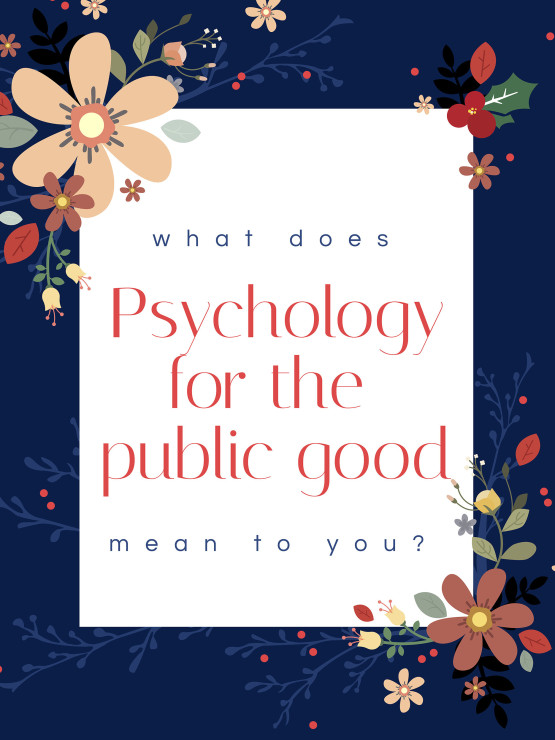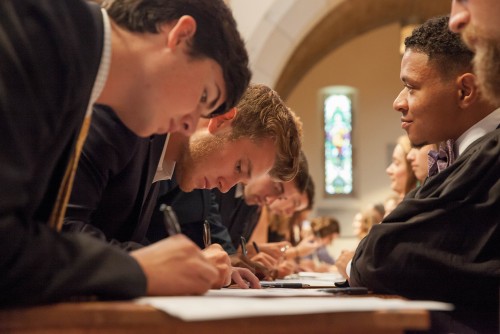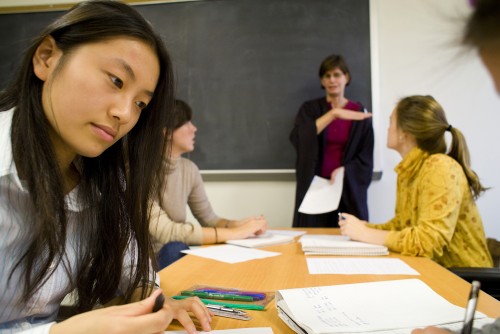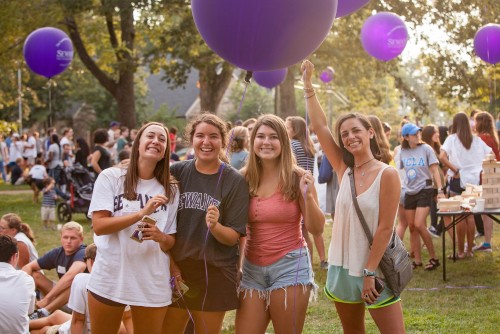What Does Youth Empowerment Look Like?
Growing up in fast-changing times and facing an increasingly uncertain future, today’s youth are in need of opportunities to share their voices. But what does it actually mean to empower young people within their communities? For Kathryn Morgan, assistant professor of psychology, it comes down to four primary components: youth voice and agency, youth-adult partnerships, organizational learning, and opportunity role structure.
Youth Voice and Agency
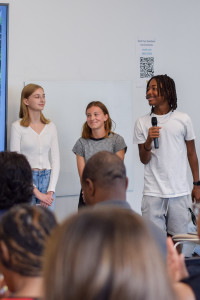 Perhaps most significantly, young people need to know that when they speak up, the adults who are present are there to listen to them and not talk over them. “In American culture, there are still remnants of this idea that ‘children should be seen and not heard,’” says Morgan. A community’s youth not only knows the challenges they and their neighbors face, but can also articulate the opportunities for effecting positive change. But their lack of access to traditional forms of power—e.g., the ability to vote or the means to transport themselves to town hall meetings with politicians—necessitates the creation of intentional spaces in which their voices are prioritized and can thus reach a needed audience.
Perhaps most significantly, young people need to know that when they speak up, the adults who are present are there to listen to them and not talk over them. “In American culture, there are still remnants of this idea that ‘children should be seen and not heard,’” says Morgan. A community’s youth not only knows the challenges they and their neighbors face, but can also articulate the opportunities for effecting positive change. But their lack of access to traditional forms of power—e.g., the ability to vote or the means to transport themselves to town hall meetings with politicians—necessitates the creation of intentional spaces in which their voices are prioritized and can thus reach a needed audience.
Youth-Adult Partnerships
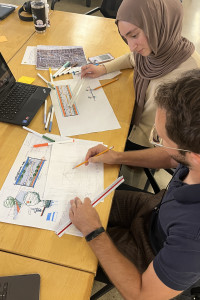 By reenvisioning the relationship between the adults and youth living and working in the same community as a partnership, the two groups’ collective power to meaningfully implement the good ideas that arise only increases. Morgan points to the example of an adult urban planner partnering with a group of neighborhood kids in Antioch, Tennessee, to plan for the addition of a soccer pitch within the community. The urban planner has the expertise needed to draw up properly scaled renderings and planning documents. But it’s the kids who will ultimately play on that field who know how they and their peers will navigate the path to get there from the local middle school. “Each one has a part of the puzzle,” says Morgan. “And together, they’ve got all the information needed.”
By reenvisioning the relationship between the adults and youth living and working in the same community as a partnership, the two groups’ collective power to meaningfully implement the good ideas that arise only increases. Morgan points to the example of an adult urban planner partnering with a group of neighborhood kids in Antioch, Tennessee, to plan for the addition of a soccer pitch within the community. The urban planner has the expertise needed to draw up properly scaled renderings and planning documents. But it’s the kids who will ultimately play on that field who know how they and their peers will navigate the path to get there from the local middle school. “Each one has a part of the puzzle,” says Morgan. “And together, they’ve got all the information needed.”
Organizational Learning
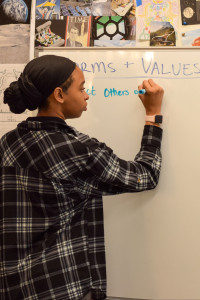 After bringing adults and youth together, an organizational learning approach ensures that youth can synthesize what they learn from each meeting and build upon it for future encounters. “Following instances where young people are speaking truth to power—like having a tough conversation with, for example, a city council member or other elected official—we debrief those conversations immediately and try to find those small wins,” says Morgan. Large-scale change isn’t likely to occur overnight, so that immediate reflection on incremental progress allows youth to celebrate what they did well, identify changes to make in the future, and approach the next iteration of an important conversation from a more empowered perspective.
After bringing adults and youth together, an organizational learning approach ensures that youth can synthesize what they learn from each meeting and build upon it for future encounters. “Following instances where young people are speaking truth to power—like having a tough conversation with, for example, a city council member or other elected official—we debrief those conversations immediately and try to find those small wins,” says Morgan. Large-scale change isn’t likely to occur overnight, so that immediate reflection on incremental progress allows youth to celebrate what they did well, identify changes to make in the future, and approach the next iteration of an important conversation from a more empowered perspective.
Opportunity Role Structure
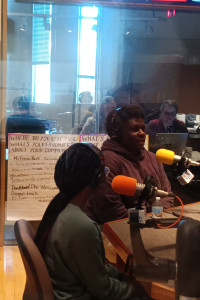 Young people may enter an organizing space for a number of reasons. Perhaps they were moved by an issue like environmental justice or gentrification, or their sibling or best friend was already involved. Often, they do so without knowing what the shape of their future involvement will be. “They don’t have to come in already fully formed, empowered, and ready to go,” says Morgan. “Opportunity role structure says: Let’s give you a small job. Let’s find something that resonates with the skills that you already have and that you want to build, and let’s get started and see how much we can help you grow.”
Young people may enter an organizing space for a number of reasons. Perhaps they were moved by an issue like environmental justice or gentrification, or their sibling or best friend was already involved. Often, they do so without knowing what the shape of their future involvement will be. “They don’t have to come in already fully formed, empowered, and ready to go,” says Morgan. “Opportunity role structure says: Let’s give you a small job. Let’s find something that resonates with the skills that you already have and that you want to build, and let’s get started and see how much we can help you grow.”
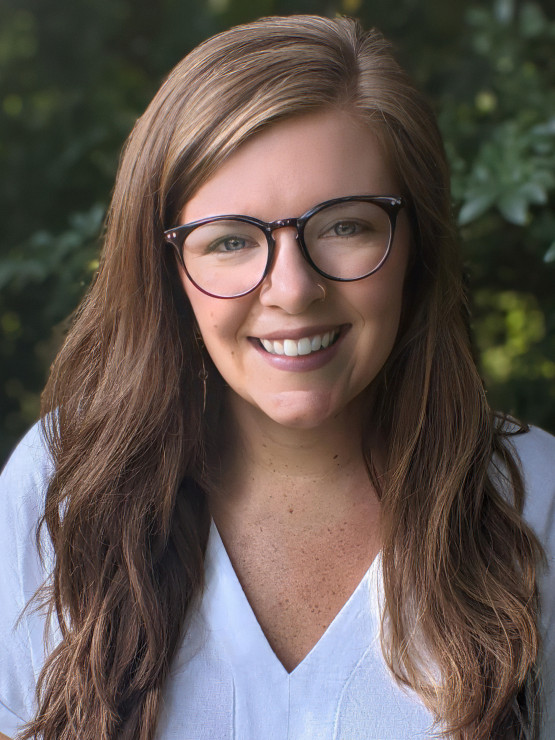
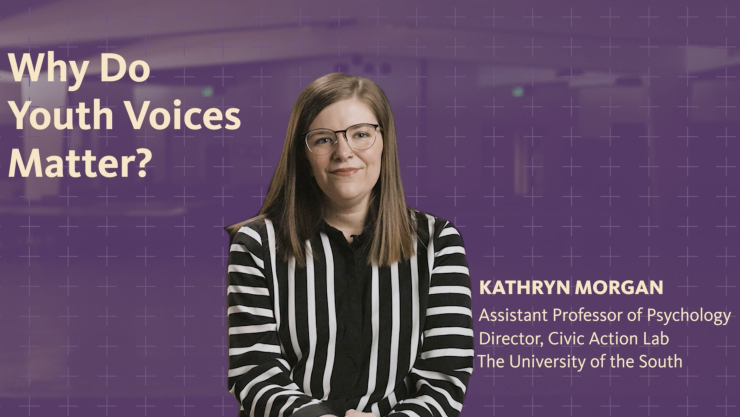

 Perhaps most significantly, young people need to know that when they speak up, the adults who are present are there to listen to them and not talk over them. “In American culture, there are still remnants of this idea that ‘children should be seen and not heard,’” says Morgan. A community’s youth not only knows the challenges they and their neighbors face, but can also articulate the opportunities for effecting positive change. But their lack of access to traditional forms of power—e.g., the ability to vote or the means to transport themselves to town hall meetings with politicians—necessitates the creation of intentional spaces in which their voices are prioritized and can thus reach a needed audience.
Perhaps most significantly, young people need to know that when they speak up, the adults who are present are there to listen to them and not talk over them. “In American culture, there are still remnants of this idea that ‘children should be seen and not heard,’” says Morgan. A community’s youth not only knows the challenges they and their neighbors face, but can also articulate the opportunities for effecting positive change. But their lack of access to traditional forms of power—e.g., the ability to vote or the means to transport themselves to town hall meetings with politicians—necessitates the creation of intentional spaces in which their voices are prioritized and can thus reach a needed audience. By reenvisioning the relationship between the adults and youth living and working in the same community as a partnership, the two groups’ collective power to meaningfully implement the good ideas that arise only increases. Morgan points to the example of an adult urban planner partnering with a group of neighborhood kids in Antioch, Tennessee, to plan for the addition of a soccer pitch within the community. The urban planner has the expertise needed to draw up properly scaled renderings and planning documents. But it’s the kids who will ultimately play on that field who know how they and their peers will navigate the path to get there from the local middle school. “Each one has a part of the puzzle,” says Morgan. “And together, they’ve got all the information needed.”
By reenvisioning the relationship between the adults and youth living and working in the same community as a partnership, the two groups’ collective power to meaningfully implement the good ideas that arise only increases. Morgan points to the example of an adult urban planner partnering with a group of neighborhood kids in Antioch, Tennessee, to plan for the addition of a soccer pitch within the community. The urban planner has the expertise needed to draw up properly scaled renderings and planning documents. But it’s the kids who will ultimately play on that field who know how they and their peers will navigate the path to get there from the local middle school. “Each one has a part of the puzzle,” says Morgan. “And together, they’ve got all the information needed.” After bringing adults and youth together, an organizational learning approach ensures that youth can synthesize what they learn from each meeting and build upon it for future encounters. “Following instances where young people are speaking truth to power—like having a tough conversation with, for example, a city council member or other elected official—we debrief those conversations immediately and try to find those small wins,” says Morgan. Large-scale change isn’t likely to occur overnight, so that immediate reflection on incremental progress allows youth to celebrate what they did well, identify changes to make in the future, and approach the next iteration of an important conversation from a more empowered perspective.
After bringing adults and youth together, an organizational learning approach ensures that youth can synthesize what they learn from each meeting and build upon it for future encounters. “Following instances where young people are speaking truth to power—like having a tough conversation with, for example, a city council member or other elected official—we debrief those conversations immediately and try to find those small wins,” says Morgan. Large-scale change isn’t likely to occur overnight, so that immediate reflection on incremental progress allows youth to celebrate what they did well, identify changes to make in the future, and approach the next iteration of an important conversation from a more empowered perspective. Young people may enter an organizing space for a number of reasons. Perhaps they were moved by an issue like environmental justice or gentrification, or their sibling or best friend was already involved. Often, they do so without knowing what the shape of their future involvement will be. “They don’t have to come in already fully formed, empowered, and ready to go,” says Morgan. “Opportunity role structure says: Let’s give you a small job. Let’s find something that resonates with the skills that you already have and that you want to build, and let’s get started and see how much we can help you grow.”
Young people may enter an organizing space for a number of reasons. Perhaps they were moved by an issue like environmental justice or gentrification, or their sibling or best friend was already involved. Often, they do so without knowing what the shape of their future involvement will be. “They don’t have to come in already fully formed, empowered, and ready to go,” says Morgan. “Opportunity role structure says: Let’s give you a small job. Let’s find something that resonates with the skills that you already have and that you want to build, and let’s get started and see how much we can help you grow.”